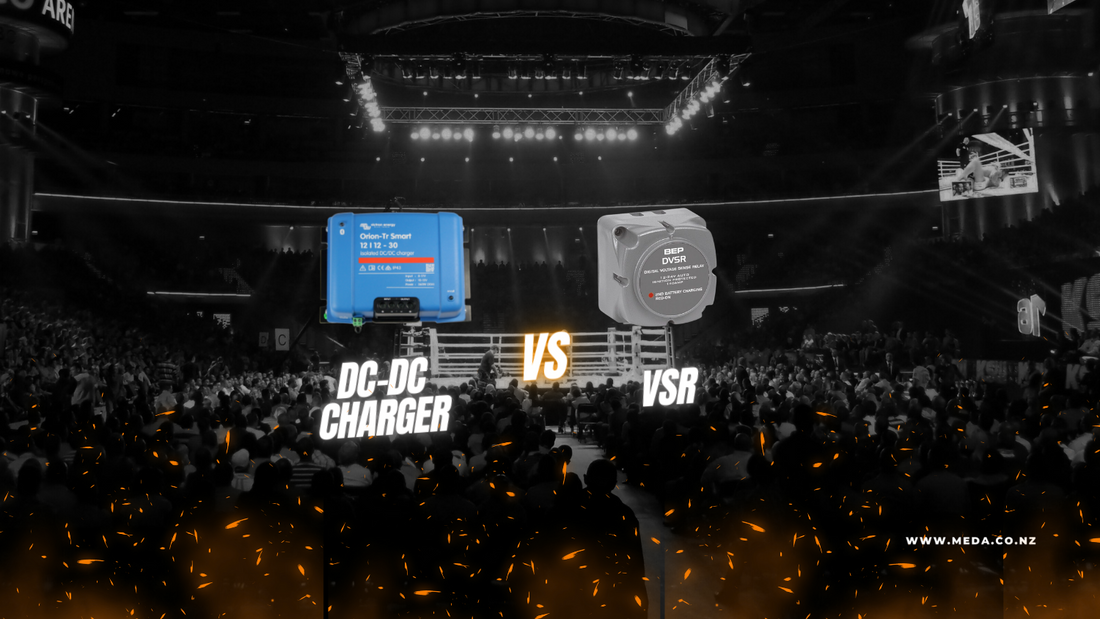Choosing the Right Charging Method for LiFePO4 Batteries
Alright, so imagine you've got a setup with two batteries: one is your regular starting battery (let's call it "Battery A"), and the other is a deep-cycle battery (we'll call it "Battery B"). Now, you want to make sure that Battery B gets charged up properly without messing with Battery A, and that's where the magic of DC-DC chargers and VSRs comes in.
The DC-DC charger is like your smart friend in the middle. It takes power from Battery A, does a few fancy conversions, and then feeds that energy to Battery B in just the right way. It's like a personal trainer for Battery B, giving it the perfect charging routine to keep it healthy and happy. Plus, if Battery A and Battery B have different needs (they're not the same type or have different voltage needs), the DC-DC charger can handle that like a champ.
Now, let's talk about the VSR (Voltage Sensitive Relay). Think of it as a simple switch that connects Battery A and Battery B together when your charging source (like your car's engine or solar panels) are doing its thing. So when your engine's running or the sun's shining, the VSR says, "Hey, let's get these two batteries connected!" But when the charging source takes a break, the VSR goes, "Alright, party's over, time to disconnect!" It's like having a bouncer at a club, making sure nobody sneaks in when the party's done.
Alright, let's spice things up a bit and throw a LiFePO4 (Lithium) battery into the mix! So, imagine we still have our trusty starting battery (Battery A) and that deep-cycle battery (Battery B), but this time, Battery B is a LiFePO4 battery.
Now, when it comes to charging these batteries, things get a little interesting. The DC-DC charger is like a high tech wizard that can handle different battery types with ease. So, even if Battery A is an ordinary lead-acid battery and Battery B is that fancy LiFePO4, the DC-DC charger is up for the challenge. It knows the special charging needs of LiFePO4 and ensures it gets the perfect treatment, keeping it healthy and extending its life. It's like having a battery guru that speaks the language of all battery types!
A VSR, being a simple switch that connects batteries when the charging voltage is detected, might not provide the necessary intelligence to handle the specific charging requirements of LiFePO4 batteries. It could potentially cause overcharging, which is harmful to LiFePO4 batteries and may lead to safety issues.
For LiFePO4 batteries, it is advisable to use a dedicated charger or a DC-DC charger specifically designed for lithium batteries such a Victron Energy products. These chargers are equipped with sophisticated electronics and charging algorithms that can safely handle the precise charging needs of LiFePO4 batteries.
In a nutshell, if you've got a more complicated setup with different types of batteries or if you want to give your deep-cycle battery some extra TLC, or if you have a LifePo4 battery go for the DC-DC charger. But if you're keeping things simple and just need to connect the batteries when there's power available, the VSR is your easy, cheaper choice.
Also if your vehicle is equipped with a modern smart alternator, a DC-DC charger becomes a must for LiFePO4 batteries.
Hope that clears things up for you! If you've got any more questions, feel free to get in contact with us at meda.co.nz

